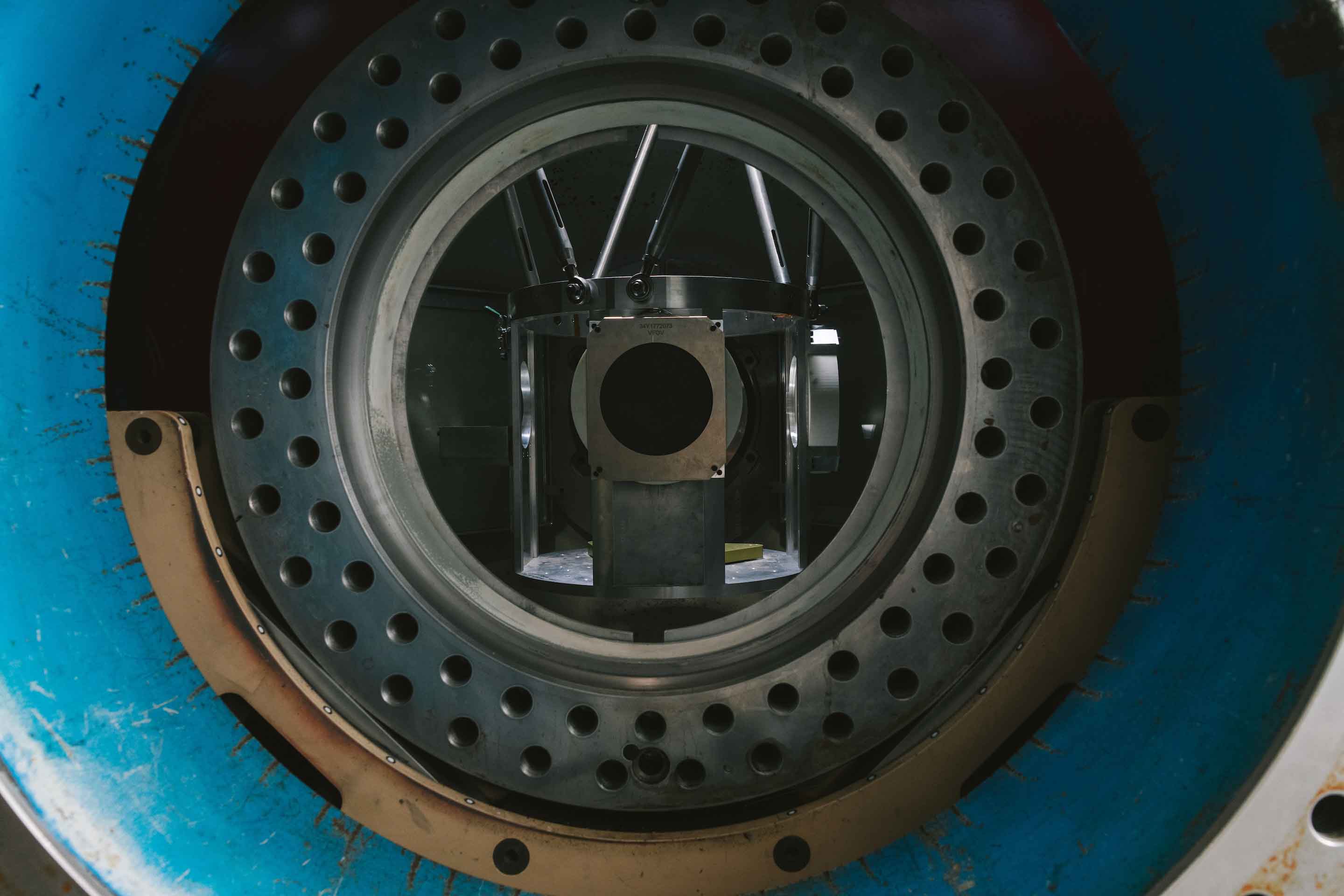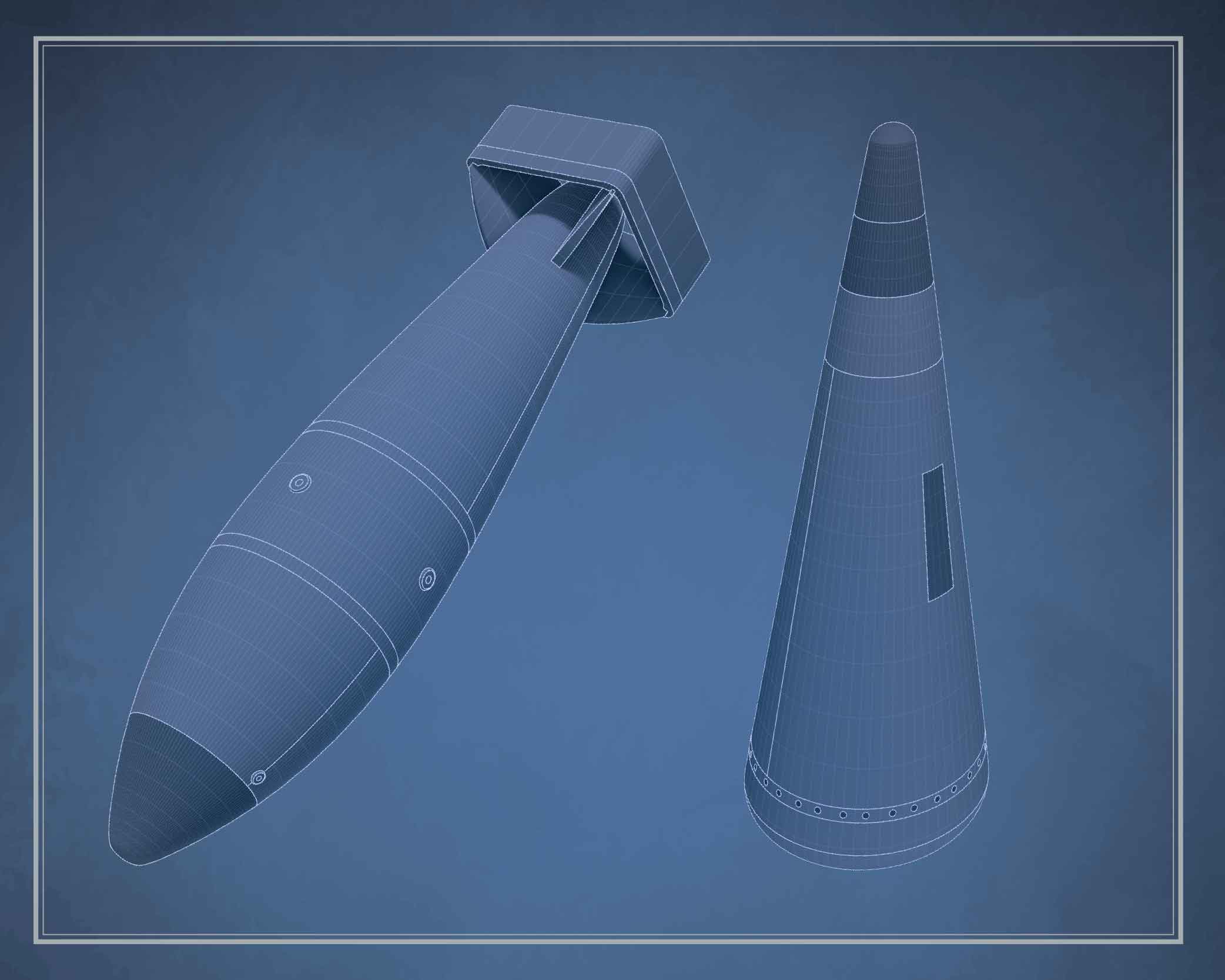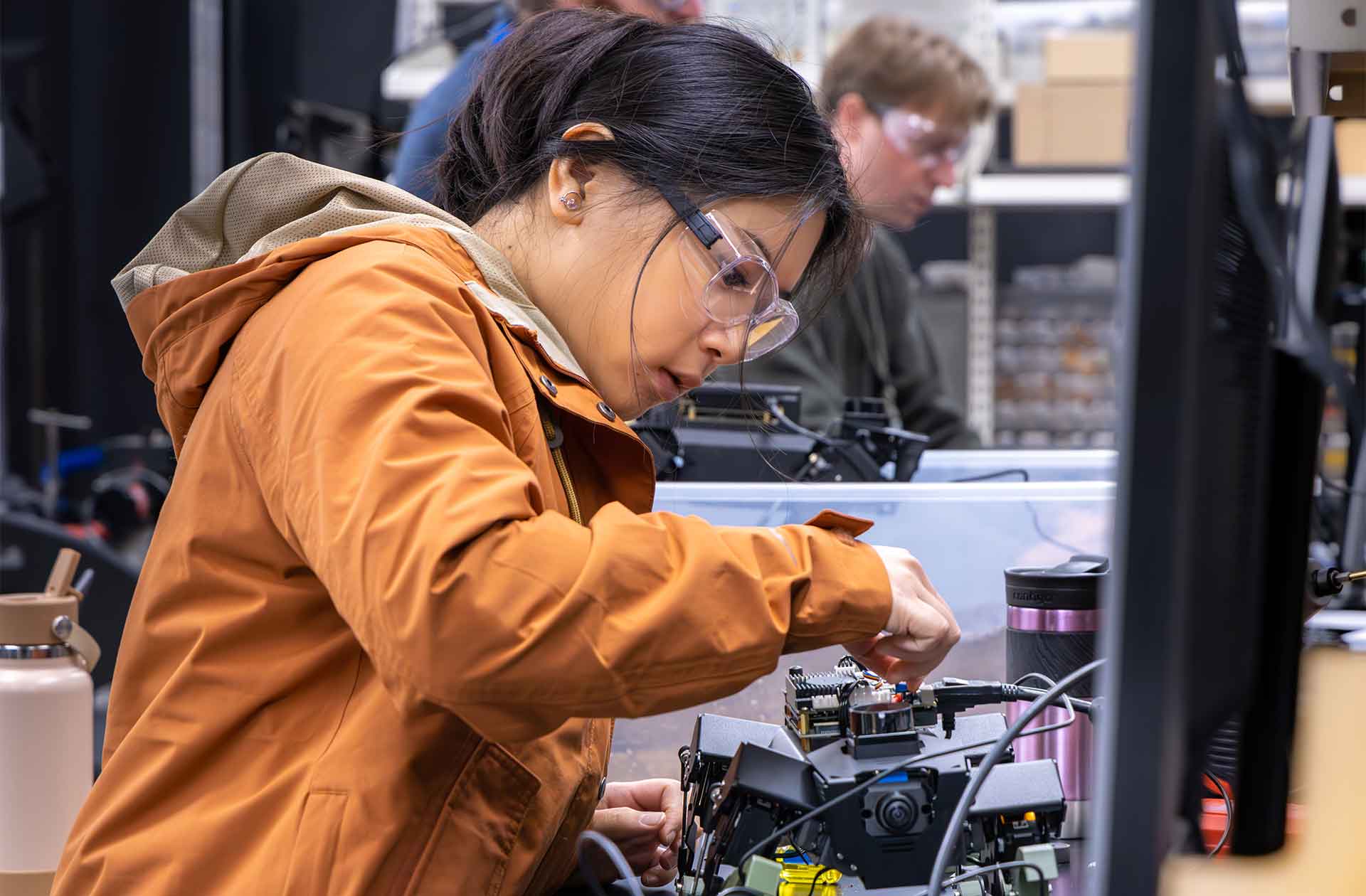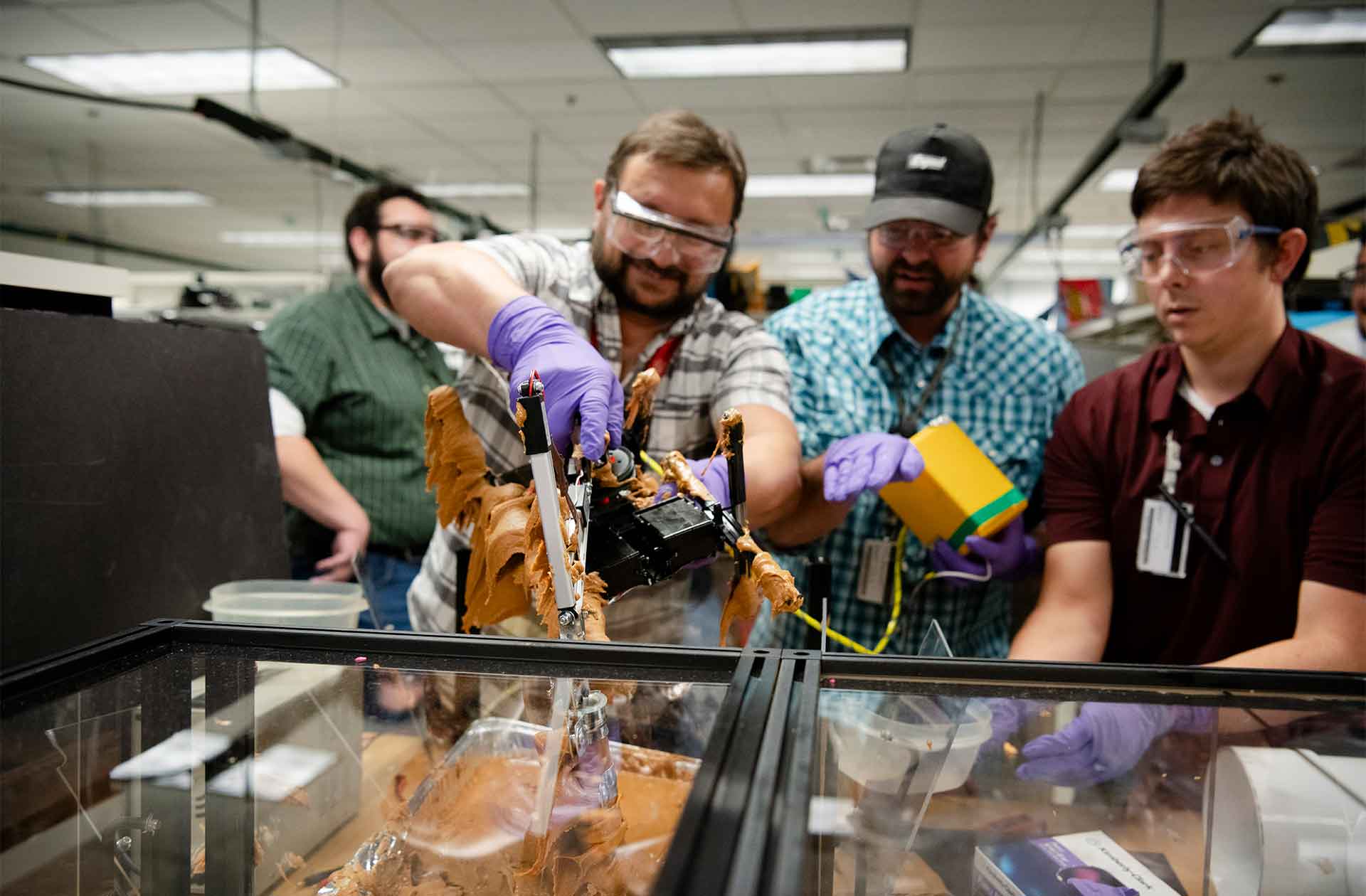Nature's storage system
By translating massive quantities of digital data into DNA language, information can be stored indefinitely.
- Katharine Coggesshall & Cristina Olds, Communications specialists

Currently, equipment used for information gathering—cameras and sensors, for example—isn’t capable of storing vast amounts of data. Researchers either have to continually retrieve or replace the maxed-out equipment or simply be satisfied with snippets of information. Not an ideal tradeoff—a different approach is needed.
DNA, the biological molecule that lives inside each human cell, embodies everything researchers seek: the ability to preserve massive information in minute space. DNA is nature’s storage system, and it has successfully passed on critical information for billions of years, even remaining viable in dinosaur bones. If this robust storage “tech” could be harnessed for digital data, it could change the landscape of intelligence gathering and storage.
Digital data is typically stored in the binary language of ones and zeros. DNA speaks with a four-letter alphabet of nucleotides, so a sophisticated digital translation tool—a codec—is necessary to bridge the gap. Recently, scientists at Los Alamos National Laboratory created such a codec to translate between binary and DNA languages.
“ADS Codex is a translator, just like you can use Google Translate to go between English and French.” —Latchesar Ionkov
“Our Adaptive DNA Storage Codec, or ADS Codex, is the first end-to-end open-source tool for robust digital storage in DNA,” explains Latchesar Ionkov of the Lab’s High Performance Computing Environments group. “In simpler terms, ADS Codex is a translator, just like you can use Google Translate to go between English and French.”
ADS Codex translates binary data to the sequence of nucleotides that make up DNA. From this sequence, which is a digital string of nucleotide letters written in a specific order, a physical piece of DNA can be created. Funnily enough, DNA creation is the easy part— scientists around the world have been doing it for decades through the use of a few chemicals and a polymerase chain reaction machine.
Armed with ADS Codex, researchers are eyeing a new suite of gadgets that can record digital data, translate it into nucleotides, generate the corresponding physical DNA, and store the strands long term. Considering each human cell holds about 6 feet of DNA in 6 micrometers of space (a bit smaller than the width of a human hair), this method will enable massive amounts of data to be stored right in the gadget itself.
ADS Codex will be most useful where big data is generated but access to that data is not needed quickly or routinely. Consider the application of a wild game camera placed on a glacier in remote Alaska for multiple years. The camera continuously records images and audio, all the while translating and synthesizing DNA for storage.
Despite the exciting advancements it offers, however, DNA is unlikely to be the go-to storage solution for everyday tech—cell phones, personal computers, and so on. Storage and retrieval of information using DNA is slow and therefore not likely to be practical for rapid access applications or widespread usage in the near future.








